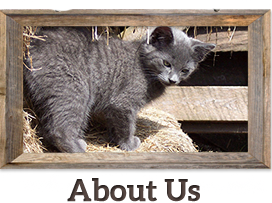Library
-
A cat’s tail is an extension of its spine, so it is an important part of its anatomy. Tail injuries are common and can sometimes be managed with home first aid, but some cases require veterinary care. This article outlines some common canine tail injuries and how they should be treated.
-
A dog’s tail is an extension of its spine, so it is an important part of its anatomy. Tail injuries are common and can sometimes be managed with home first aid, but some cases require veterinary care. This article outlines some common canine tail injuries and how they should be treated.
-
If your cat limps, or licks at her pads, she may have a foot pad that is torn, punctured, or burned. Minor injuries may be treated at home, by cleaning and covering the wound, but deeper or complicated wounds require veterinary attention. Try to avoid foot injuries in your cat by surveying the areas where your cat plays and walks.
-
If your dog limps, or licks at his pads, he may have a foot pad that is torn, punctured, or burned. Minor injuries may be treated at home, by cleaning and covering the wound, but deeper or complicated wounds require veterinary attention. Try to avoid foot injuries in your dog by surveying the areas where your dog plays and walks.
-
Fish oil is an over-the-counter supplement, given by mouth, that is commonly used to treat a wide variety of inflammatory conditions. Give as directed by your veterinarian. Side effects are not common but may include vomiting, diarrhea, or a fishy odor. Do not use concurrently with anticoagulant medications. If a negative reaction occurs, please call your veterinary office.
-
White spot disease (also called ich) is an infection of freshwater fish caused by a single-celled, protozoan parasite. Affected fish have small, white cysts on their skin, gills, and fins. It is highly contagious between fish.
-
For reasons that are difficult to explain, Flat-Coated Retrievers are not as common as pets as other retriever breeds, but it is said that once you live with a Flat-Coated Retriever, no other breed will do.
-
The excessive formation of gas in the stomach or intestine is referred to as flatulence. The most common cause of flatulence is a change in diet or dietary indiscretion. Most cases of chronic flatulence are caused by a diet that is poorly digested. Treatment often involves a change in diet.
-
Flaxseed oil is derived from flax plant seeds and contains high levels of alpha-linolenic acid (ALA), an omega-3 fatty acid, and is used to treat certain inflammatory conditions. Give as directed by your veterinarian. Side effects may include diarrhea, vomiting, delayed wound healing, or an oily coat and skin flakes. Serious side effects include persistent stomach upset, or pancreatitis. Flaxseed oil should not be used in pets that are allergic to it. If a negative reaction occurs, please call your veterinary office.
-
Despite common belief, an average cat experiences only minor skin irritation in response to flea bites. Even in the presence of dozens of fleas, there will typically be minimal itching. On the other hand, a cat with flea allergies will have a severe reaction to even a single flea bite. Affected cats experience intense itching and will chew, lick, or scratch the affected site(s) nonstop, causing hair loss and possibly open sores or scabs on the skin, allowing a secondary bacterial infection to develop. Strict flea control is the foundation of successful treatment. There are many highly effective flea control products for treating the cat and controlling fleas in the environment.


